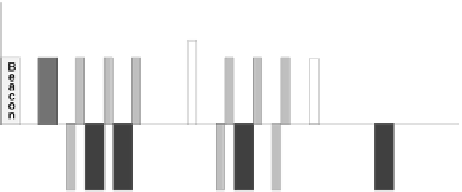Information Technology Reference
In-Depth Information
Fig. 1.
The basic operation of HCCA
Maximum TXOP duration
(
): Maximum TXOP duration allocated to
the station. The MTD is bounded by the transmission time of the aggregate
maximum burst size.
The basic operation of HCCA is as follows. First, QAP and QSTA exchanges
TSPEC through trac stream(TS) before starting the data transmission. Ad-
mission Control Unit(ACU) accepts the new flow only if can be accommodated in
the available channel bandwidth without affecting QoS of the other established
connections.
If a QSTA is admitted, the admitted QSTA can occupy the channel for TXOP
at most. Channel assignment is repeated after SI has passed. The operation of
transmission is illustrated in figure 1.
MTD
2.2 Reference Scheduler
As explained in the previous section, HCCA requires a scheduling algorithm to
control the order of frame transmission, TXOPs and SI. A reference scheduler
Scheduler is proposed in the IEEE 802.11e standard [2].
The basic operation of reference scheduler consists of three phases that after
SI of admitted
QST A
is calculated, TXOP is calculated from SI. Then the
admission controller determines if the QSTA is admitted or not.
1st Step
:
SI allocation
SI is calculated as follows. SI is the greatest common divisor of the beacon inter-
val, which is smaller than MSI of admitted QSTA. For example, let us assume
that the beacon interval is 100ms and MSIs of flows(i, j, k) are, respectively, 60,
90 and 30msec and the flows are admitted in the order named as illustrated in
figure 2. First, if a flow i of which MSI is 60ms is admitted, SI is chosen as 50ms
because the greatest divisor for the beacon interval, which is smaller that 60ms
is 50ms as illustrated in figure 2-(a). And in case of 90ms, SI is not changed
because 90ms is larger than 60ms as illustrated in figure 2-(b). Finally, in case of






























Search WWH ::

Custom Search